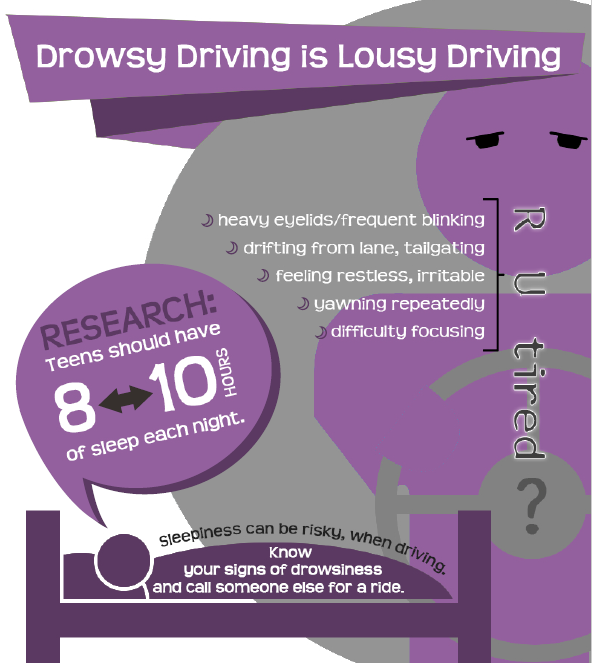The Sleep Foundation remarks that sleep-deprived drivers are the cause of more than 6,400 casualties and 50,000 injuries on American highways.
Studies show that sleep deprivation can affect motorists’ judgment, reflexes, and reaction times, effectively making them unfit to drive a motor vehicle. We discussed previously here on U in The Driver Seat how drowsy driving is much like alcohol-impaired driving: it slows down mental processing and impairs attention. In some cases, it can even be worse than drunk driving, as drivers who fall asleep at the wheel cannot take any evasive action or engage the brakes. These effects, in turn, can cause more serious accidents. College students are especially vulnerable, with irregular sleep schedules and sleep deprivation becoming more and more common.

While most college students are aware of the dangers and implications of drowsy driving, many still do not associate fatigued driving as a severe enough crash risk. In a study of college students published in the Journal of Sleep Health, 26 participants between the ages of 18 and 25 viewed fatigued driving as a normal part of their lives. As such, the Federal Government has taken steps to curb drowsy driving among those most prone to it, like students and truck drivers who often have to drive long hours.
The Federal Motor Carrier Safety Administration implemented regulations for truck drivers, including the Electronic Logging Device (ELD) mandate. The ELD works by proactively reminding drivers and management when truck drivers are nearing the limits of their maximum hours of driving. The regulation hopes to ensure that truck drivers get more sleep, thereby helping prevent accidents caused by drowsy driving. Despite legal moves like this, there are no comprehensive laws against drowsy or fatigued driving. In the case of students in particular, it is difficult to associate drowsy driving with any legal risks. This is why it is imperative for college students, who also suffer from lack of sleep, to recognize the first signs of driver fatigue and work towards lessening the dangers that come with it.
The Sleep Health study goes on to reveal that many students felt that fatigued driving is unavoidable, and is something that they have no direct control over. In other words, they do not recognize the signs of fatigue as a major risk to operating a motor vehicle and may not be aware of the disruptions to their body’s circadian rhythm. With busy social lives, part-time work, and school schedules, college students receive less than average sleep per night and end up chronically sleepy, not able to distinguish signs of fatigue. These signs include:
-
-
yawning,
-
sore eyes,
-
irritability,
-
impatience and
-
irregular driving, among others.
-
In this light, the National Highway Traffic Safety Administration (NHTSA) advises college students to avoid driving home from school on the day exams conclude. You should instead get a good night’s sleep first. Extreme fatigue follows sleepless nights of studying, which then represents an acute risk when operating a motor vehicle. If you are fatigued, but absolutely must drive, NHTSA recommends having around two cups of coffee or taking a 20-minute nap. Immediately afterwards, you should drive to the nearest place where you can get proper sleep.
Learning to recognize the signs of fatigued driving can save your life and the lives of others on our roadways.
Feature solely drafted for u-driver.com by Jake Cole
Leave a Reply